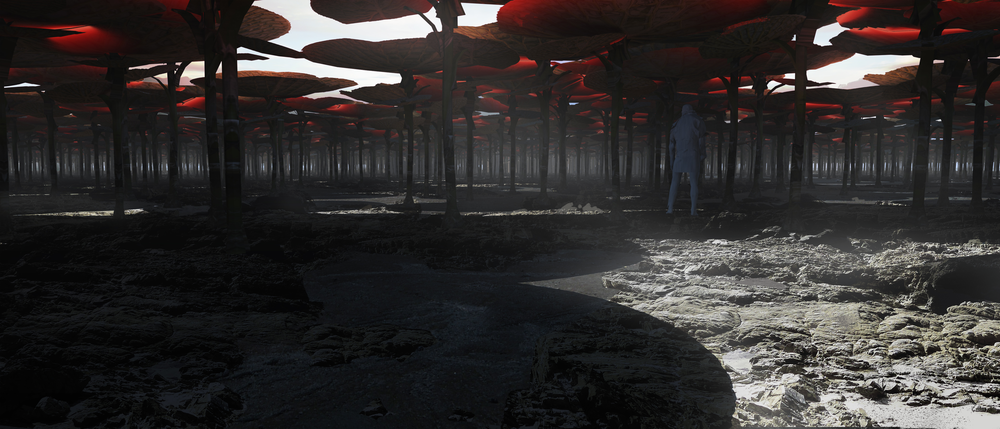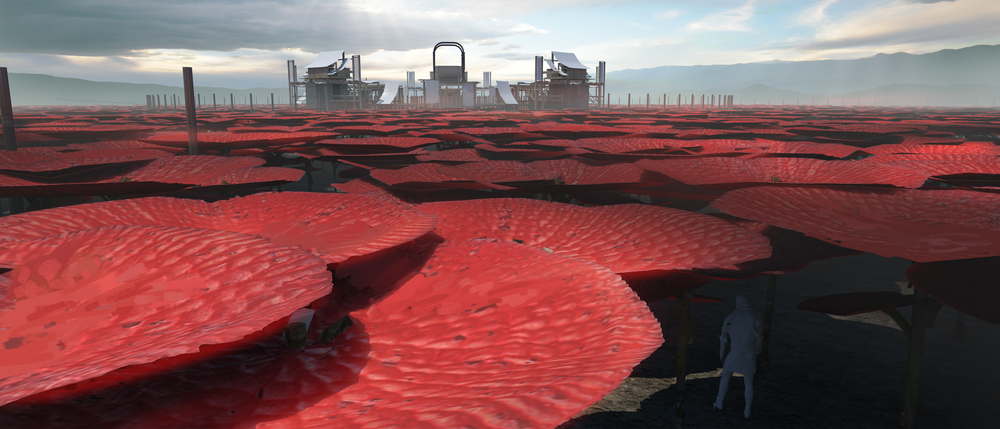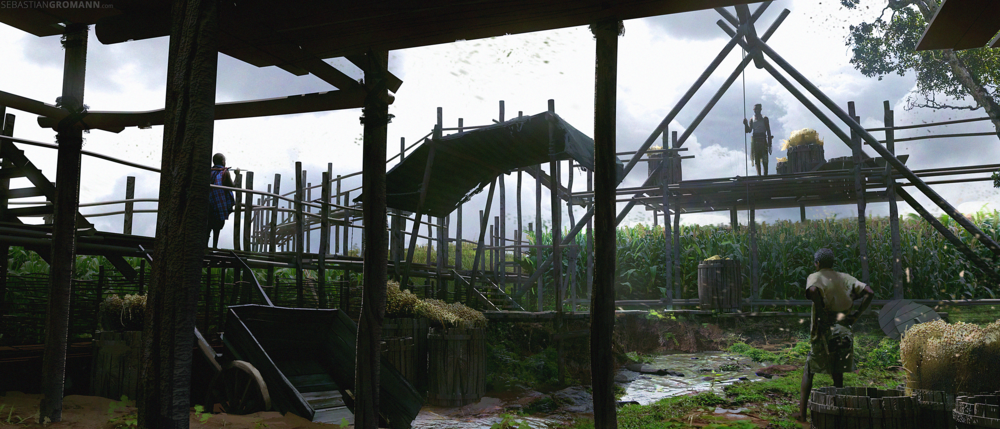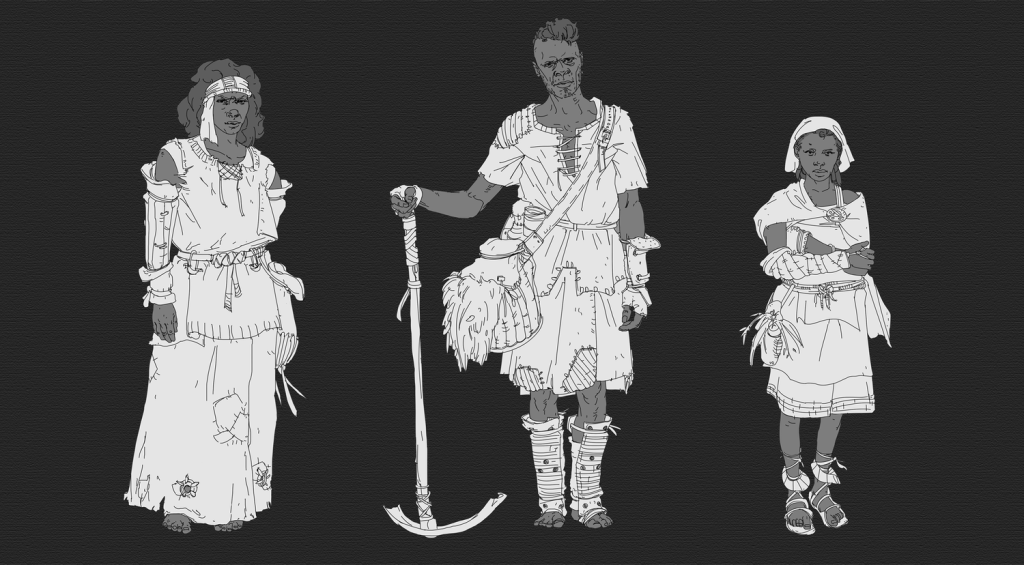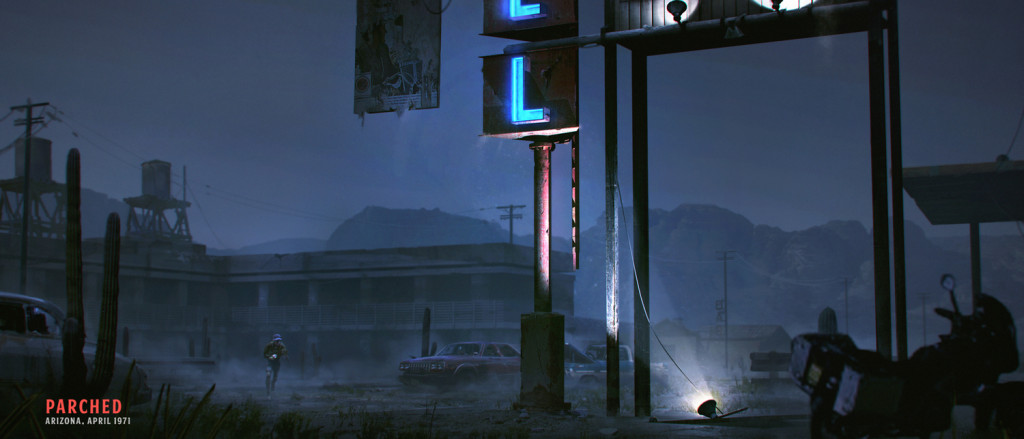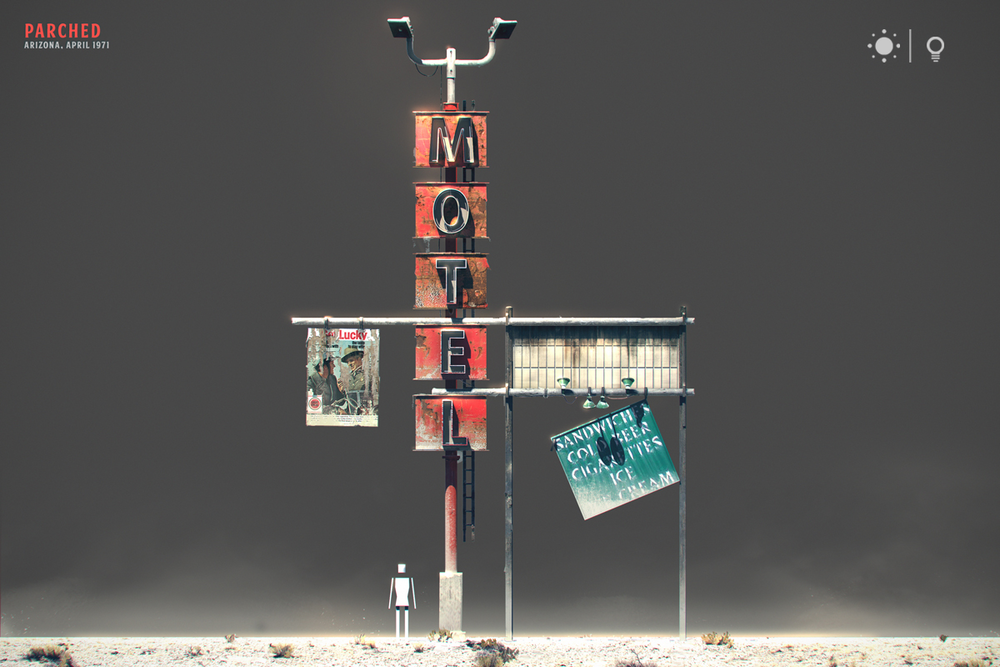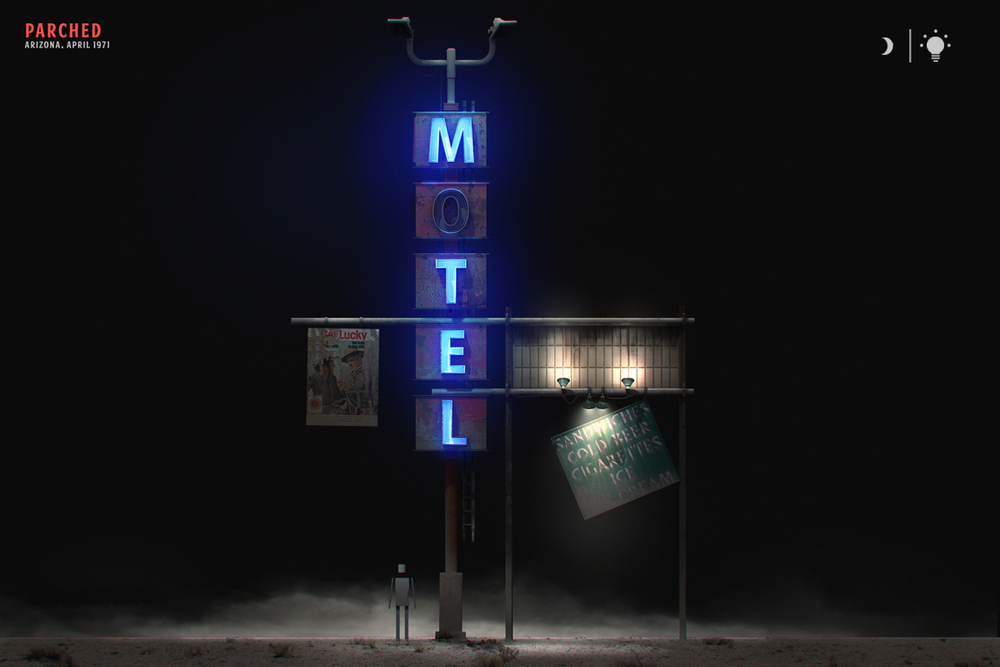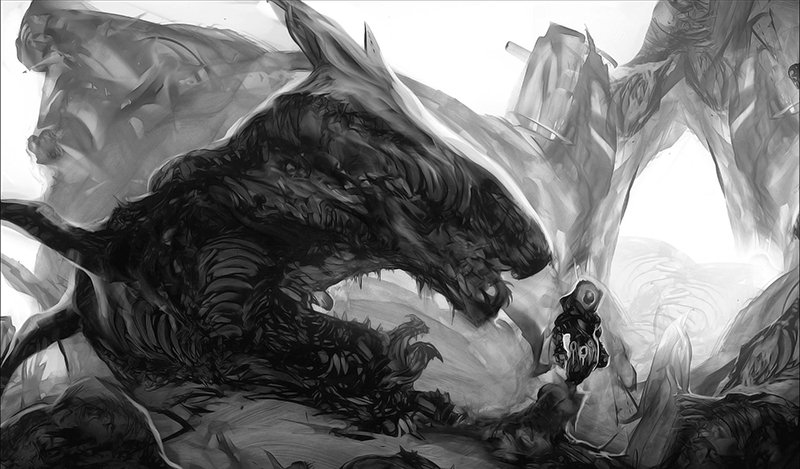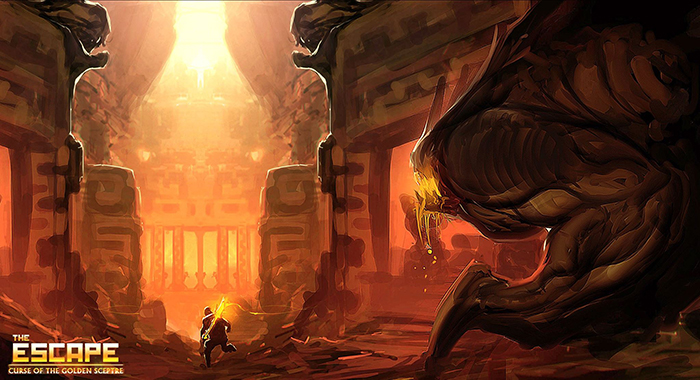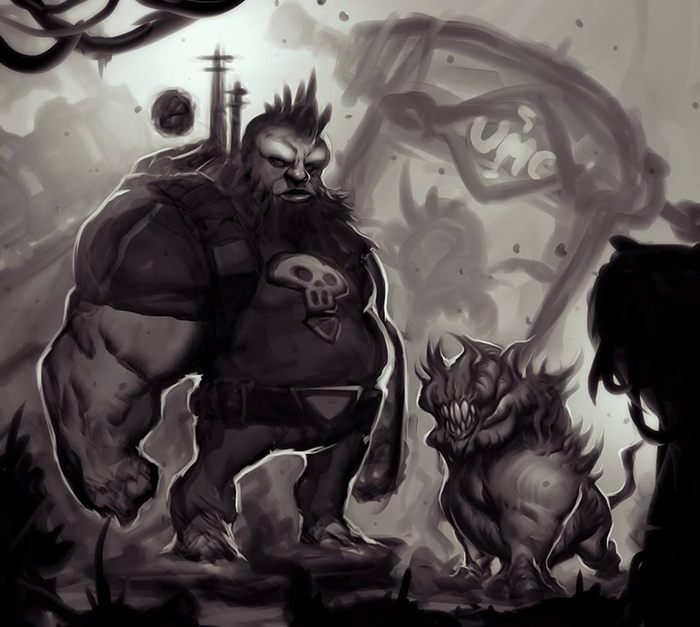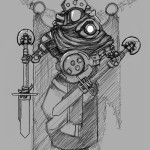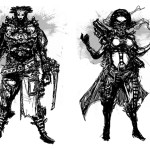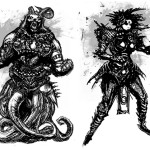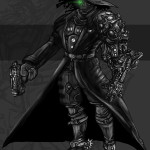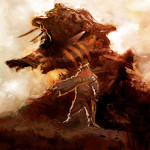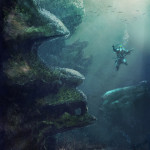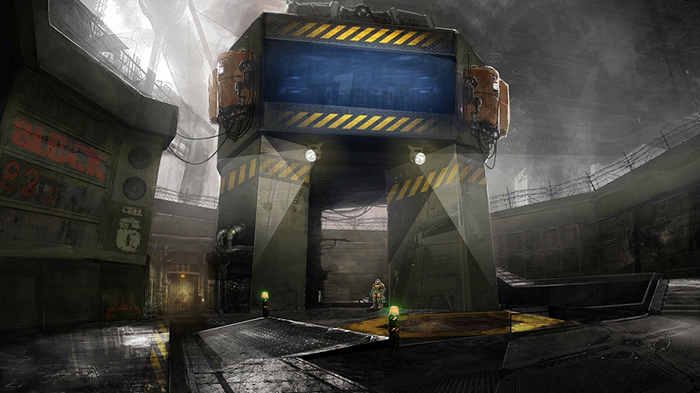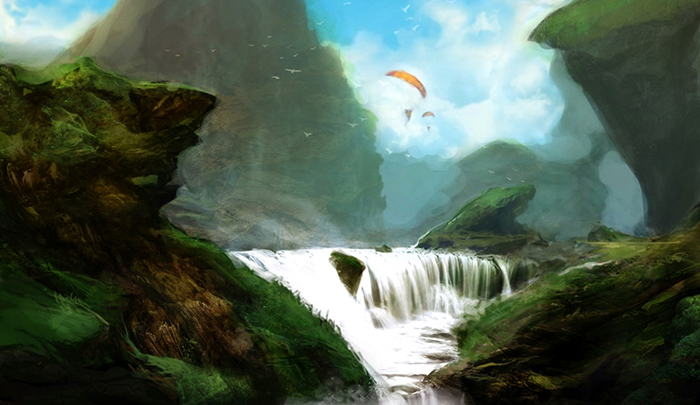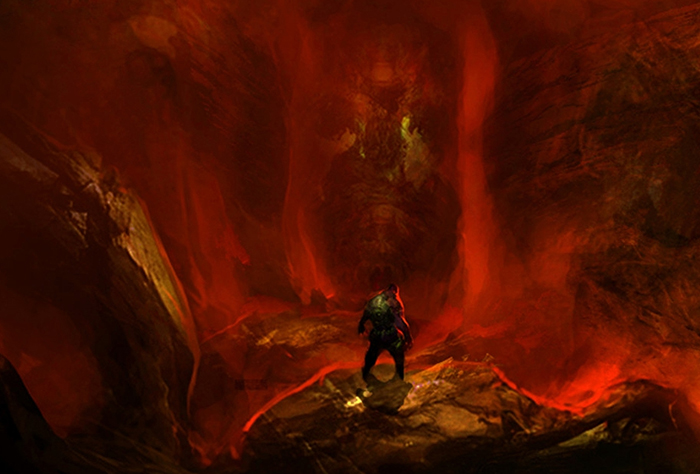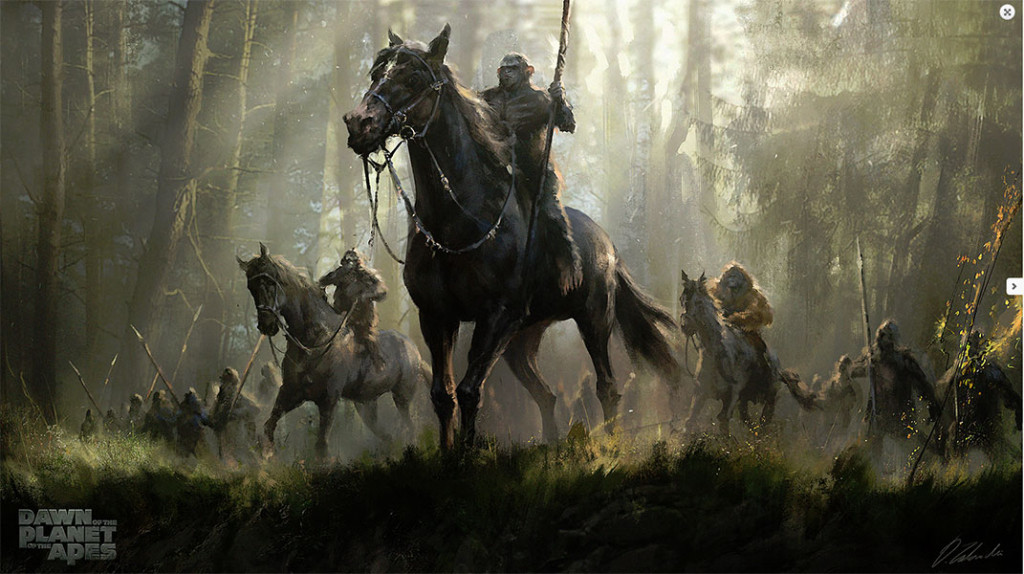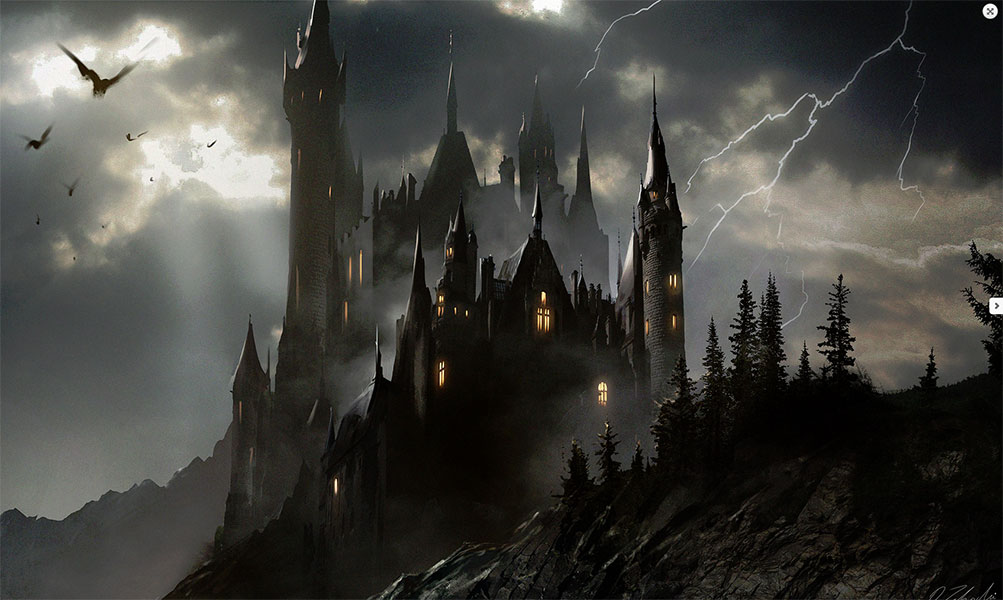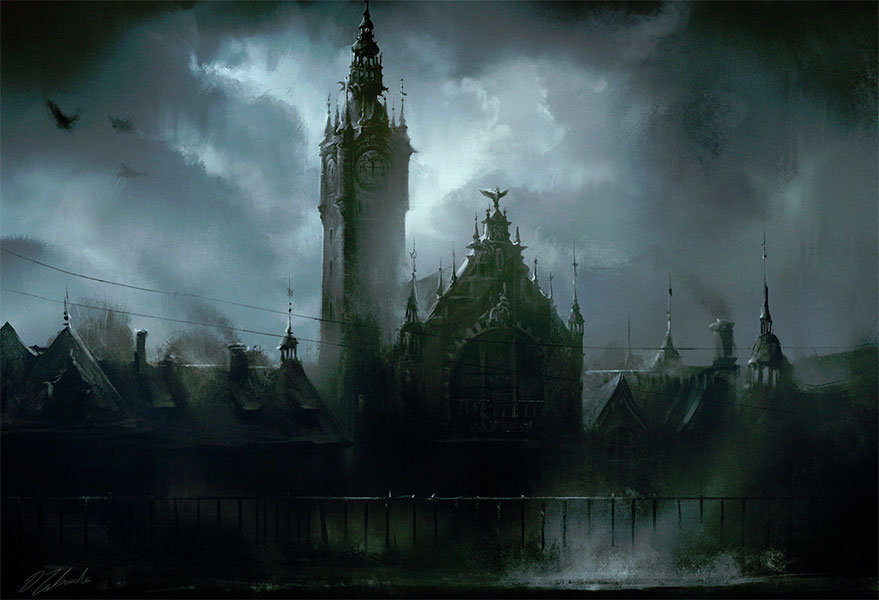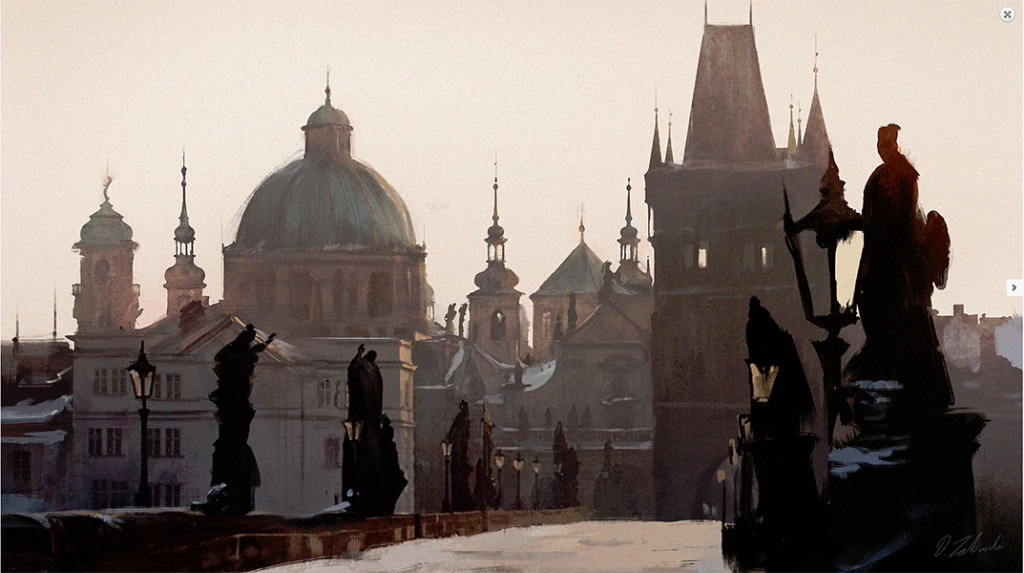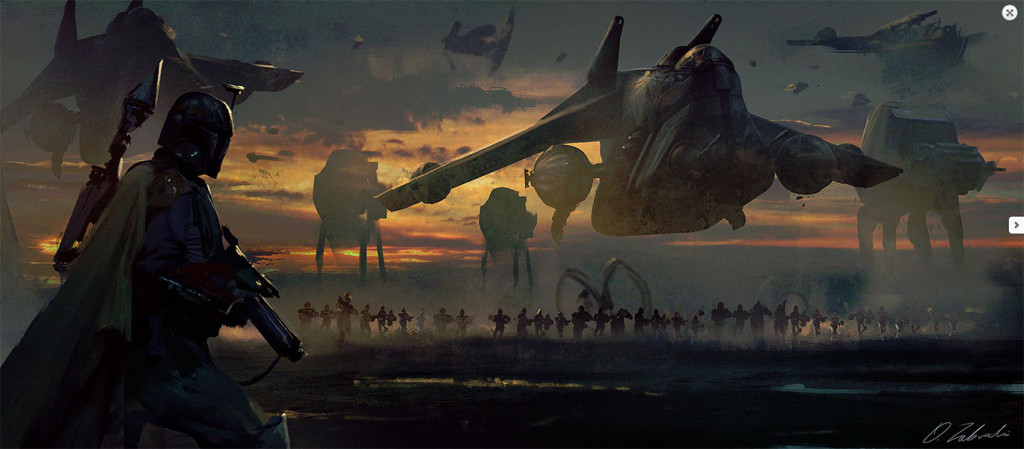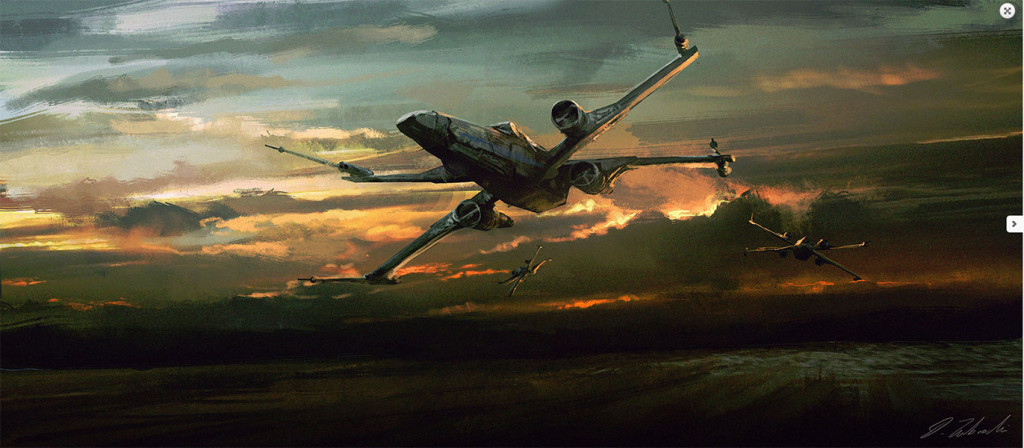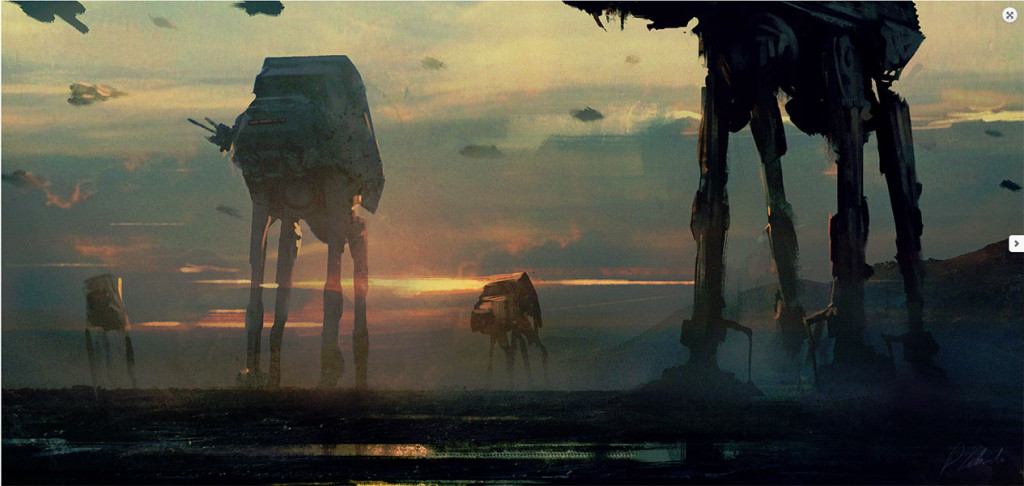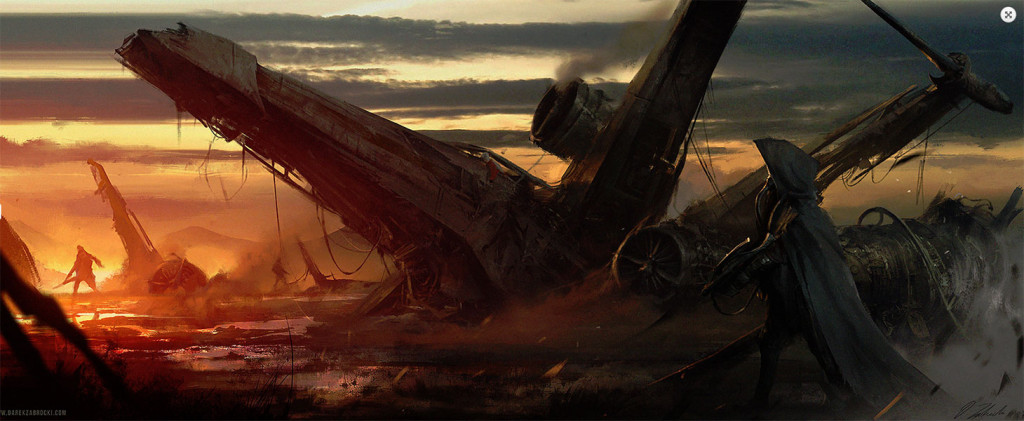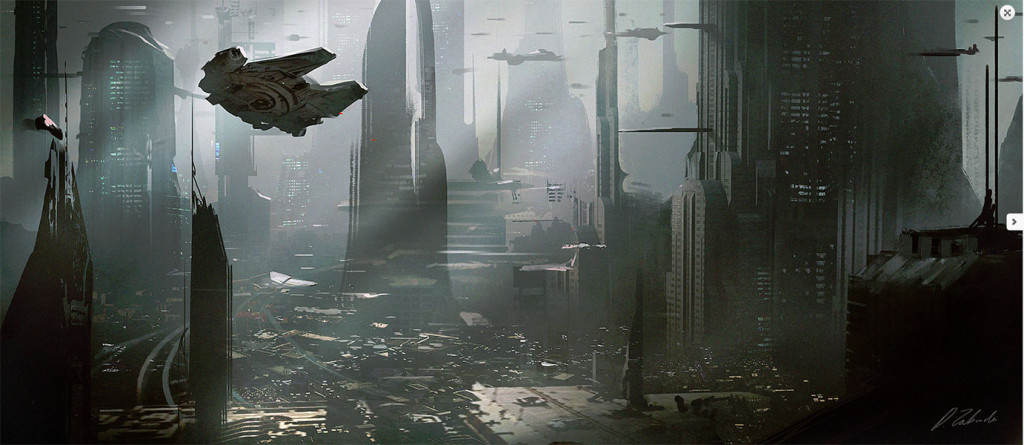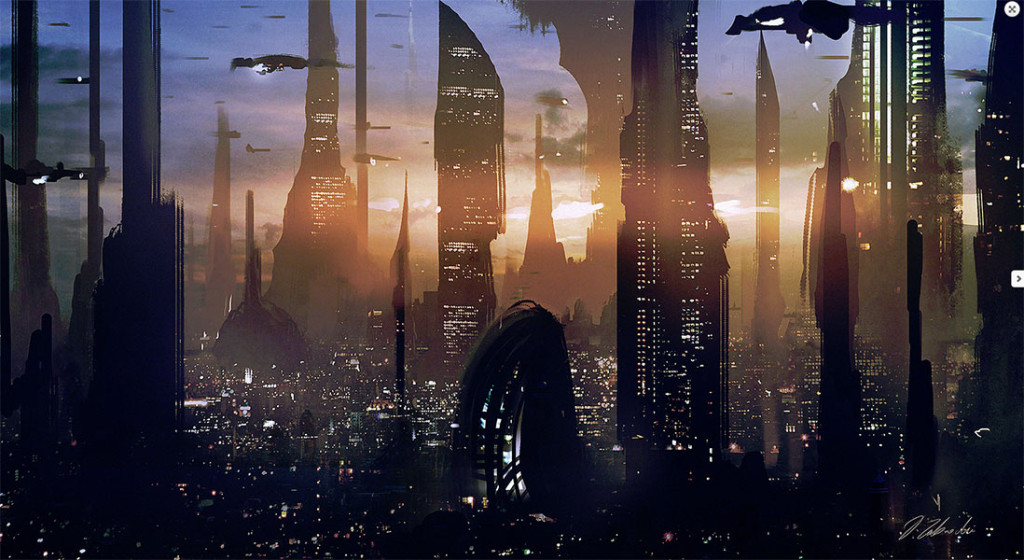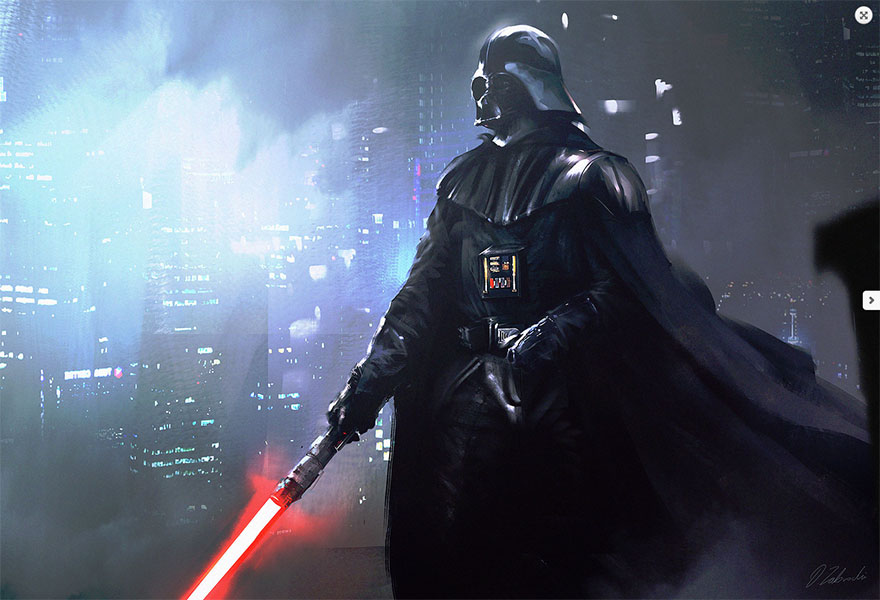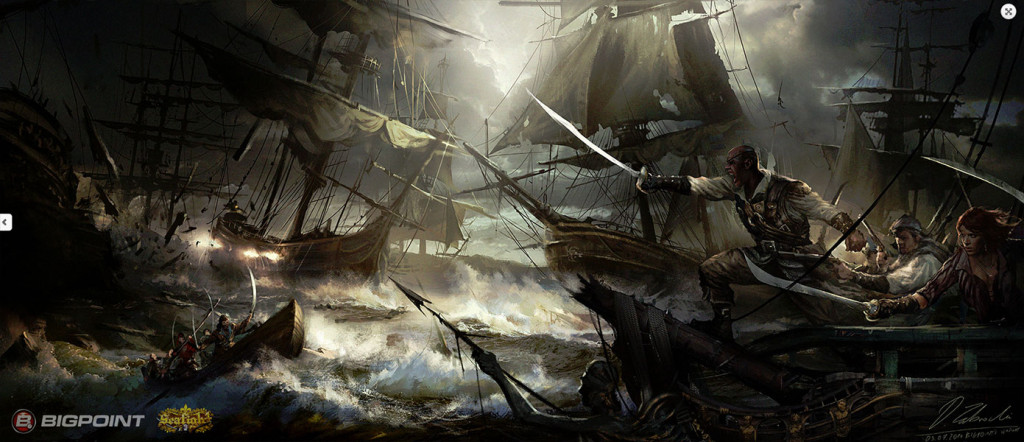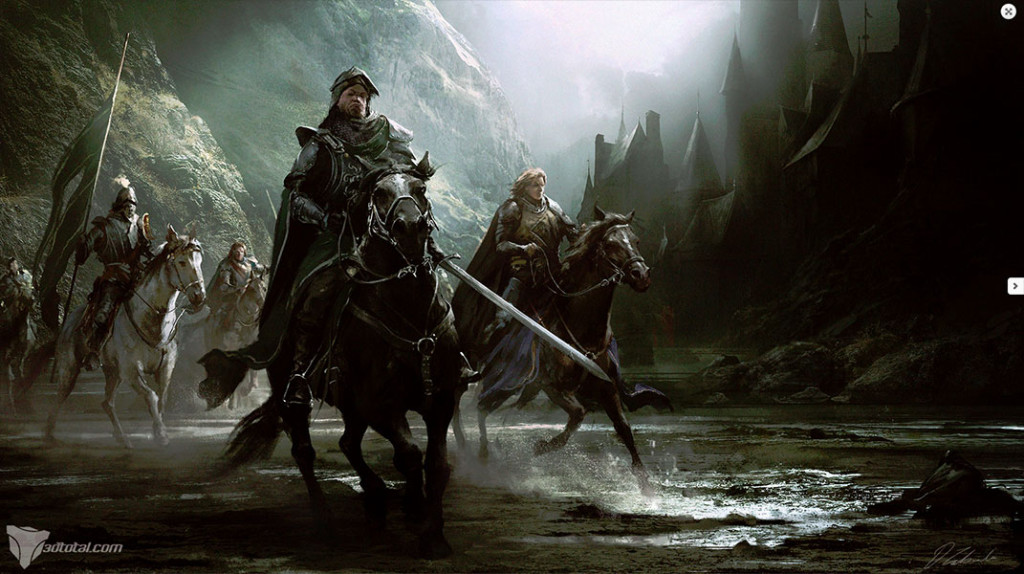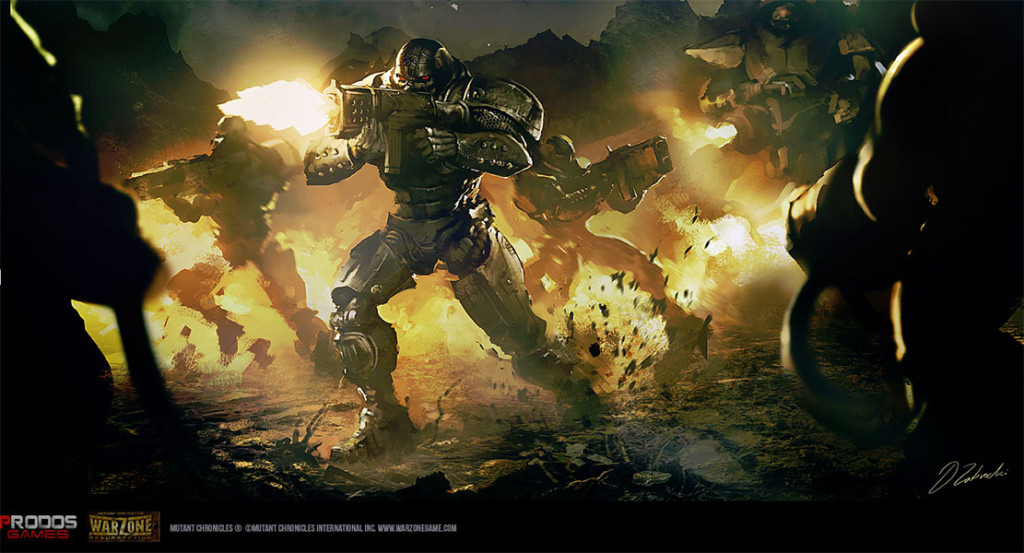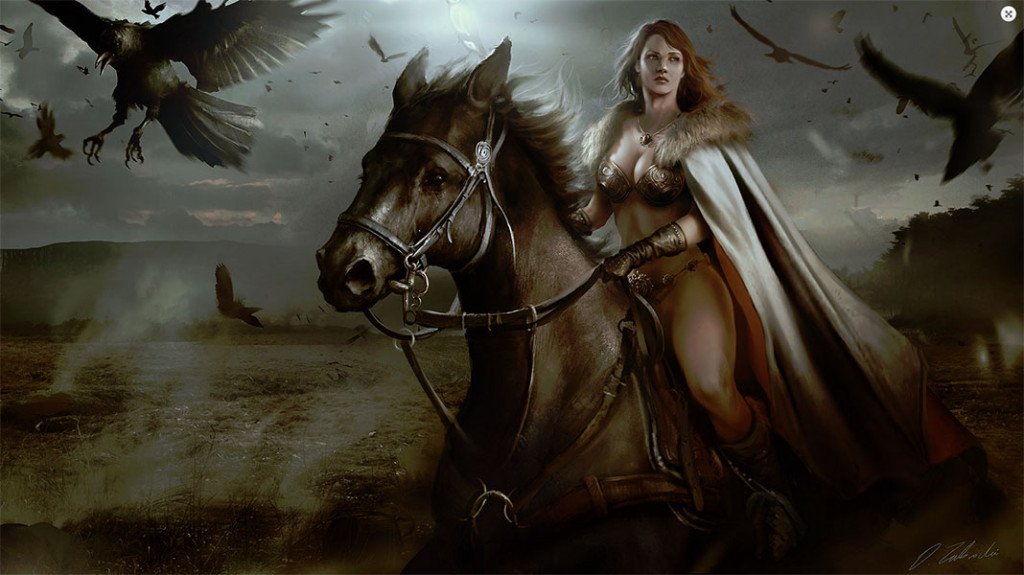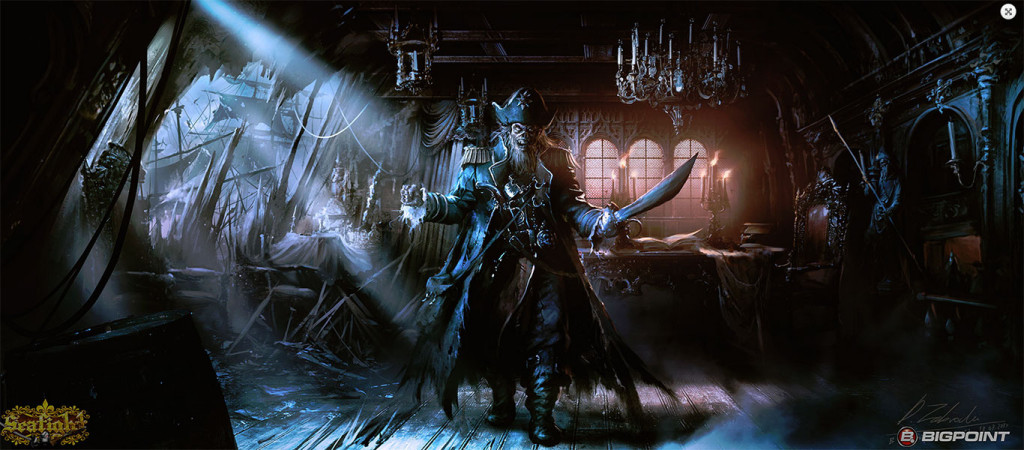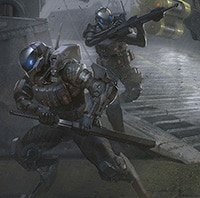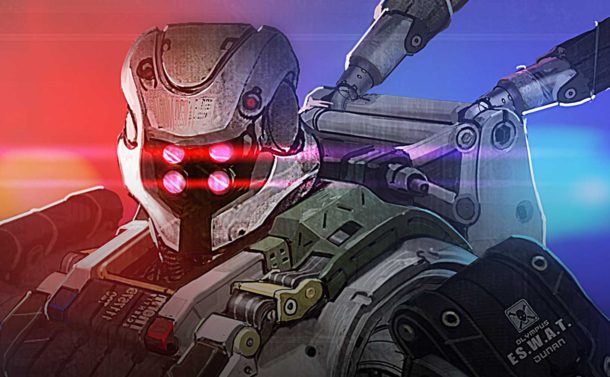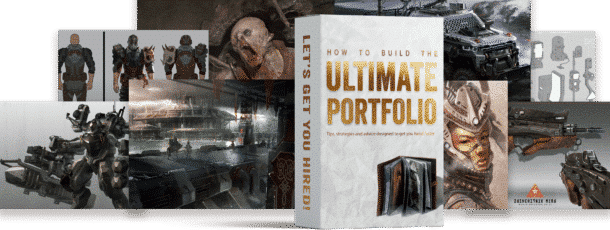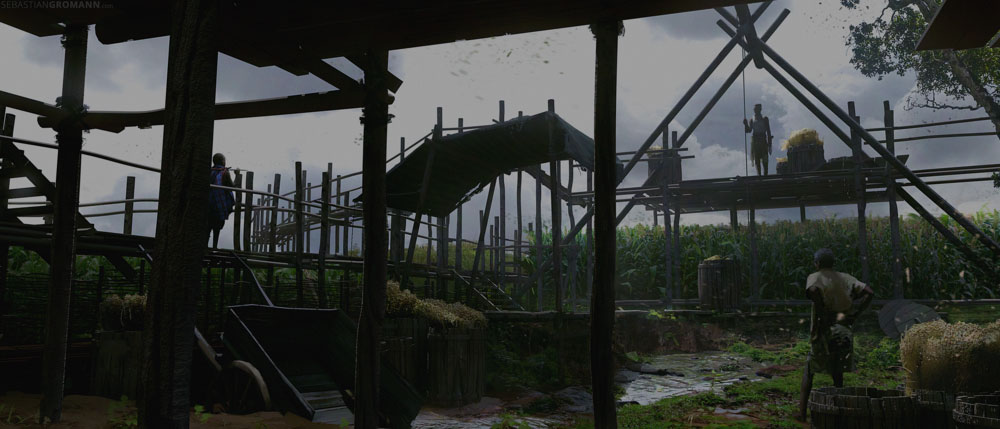
by Eliott Lilly | Sep 30, 2015 | Interviews
Sebastian Gromann is a freelance Concept Designer working in the entertainment industry currently living in Berlin, Germany.
Portfolio: www.sebastiangromann.com
Art Station: http://www.artstation.com/artist/SebastianGromann
Facebook: http://www.facebook.com/sebastian.gromann
Sebastian Gromann’s Current portfolio examples:
In this first part of the interview, we asked Sebastian Gromann specific questions about what it’s like to be a concept artist in the entertainment industry, dispel a few common misconceptions that aspiring artists tend to have about the field, and discuss his educational background. Here’s what he had to say:
AT WHAT AGE DID YOU COMMIT TO BECOMING A PROFESSIONAL ARTIST? WHAT WERE YOUR MOTIVATIONS/ INSPIRATIONS?
I was always passionate about being creative and was filling some blank papers here and there in my early childhood. But I only started to take art seriously when I received my copy of the Guildwars artbook back in 2008. I was totally amazed by the artworks of Daniel Dociu, Jamie Jones and Richard Anderson (flaptraps), to name a few. I found out that creating that imaginary stuff I loved is actually a job called concept art, which you can do for a living.
From that day on I spent most of my free time learning how to draw and paint. The popular website conceptart.org was an enormous influence and motivational boost for me.
WHAT ARE THE BIGGEST CHALLENGES OF YOUR JOB AS AN ARTIST WORKING IN THIS INDUSTRY?
The job of a concept artist brings a daily dose of exciting obstacles. It’s fun to solve creative problems every day and come up with interesting visuals, but at the same time this is also one of the biggest challenges. It’s tough to come up with something new every time, making stuff work and appealing and find a balance between your standards and the requirements of your client.
CAN YOU SHARE A PERSONAL STORY, ABOUT A HARD LESSON THAT YOU LEARNED (ON THE BUSINESS OR ARTISTIC SIDE OF THINGS), THAT COULD HAVE BEEN AVOIDED, HAD YOU BEEN BETTER INFORMED?
One very important lesson I learned and am actually still learning is how valuable time constraints are. This is actually referring to both mentioned sides, the artistic and business one. My first month working at a studio I struggled a lot with finishing my daily tasks. I sometimes caught myself noodling around and repeating a known method without giving myself a specific stopover. I didn’t know any better since the artworks I created for myself at that time were formed by very organic workflow decisions. Furthermore, personal works don’t have any deadlines, which means that I could basically jump from one unfinished spot within the painting to another until I was satisfied with the overall result. This isn’t always a bad thing though, but it’s kinda obstructive when you need to finish a given task within a set time frame, remembering that time is still money. I now know that there are Powerful tools for artists that are available and can help you with all aspects of the job whether it be invoicing or time management. I have learned to utilize all that is available to me.
I personally need to plan ahead and write down small goals I want to archive within a certain time. Writing steps down also forces me to make up my mind on how I should tackle each step. This increases my overall efficiency to a considerable degree.
Sebastian Gromann’s student work from 2008:
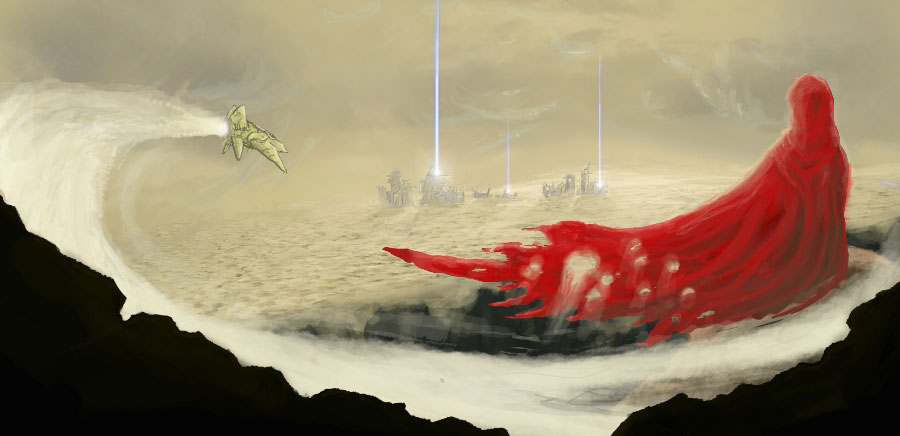
IN THIS DAY AND AGE OF INEXPENSIVE AND EASILY ACCESSIBLE ONLINE TRAINING MATERIALS (YOUTUBE VIDEOS, GUMROAD TUTORIALS, ETC.), HOW VALUABLE DO YOU BELIEVE, GETTING AN EDUCATION FROM A UNIVERSITY OR COLLEGE WILL BE FOR ASPIRING ARTISTS WHO WANT TO BREAK INTO THE ENTERTAINMENT INDUSTRY?
Generally speaking there’s no need for an aspiring artist to graduate from a university or college, because no one is going to ask you about your degree.
Your portfolio and skills are the verification that counts in this industry.
I would also say that it tremendously depends on the individual person. There are numerous concept artists who are fully self taught and broke into the industry with the help of online resources and self-sufficient learning only. Others might need motivational boosts from like-minded people participating together in various art classes.
From my point of view one can always benefit from attending a study program, even if it’s not one’s direct passion or pursued job. For example: the study program I graduated from focuses on game design, (it’s mechanics and process) rather than on game art. As a result, I have learned the basic requirements of game development, and I understand what the guys coming after me in the production pipeline will require of my concepts.
Sebastian Gromann’s student work from 2010:
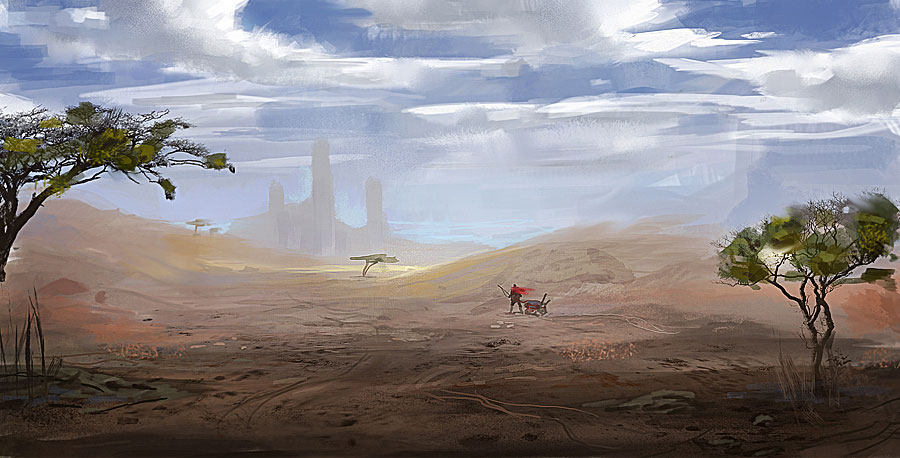
DID YOU HAVE ANY OUTSIDE HELP PUSHING YOU ALONG WITH YOUR TRAINING? LIKE A MENTOR, OR PASSIONATE TEACHER?
I didn’t have any personal mentor, but I was always surrounded by amazing colleagues and likeminded friends. We were always making sure to help one another and to push each other to the next level.
You’ll get an enormous knowledge boost if you surround yourself with people who are better than you.
Sebastian Gromann’s student work from 2012:
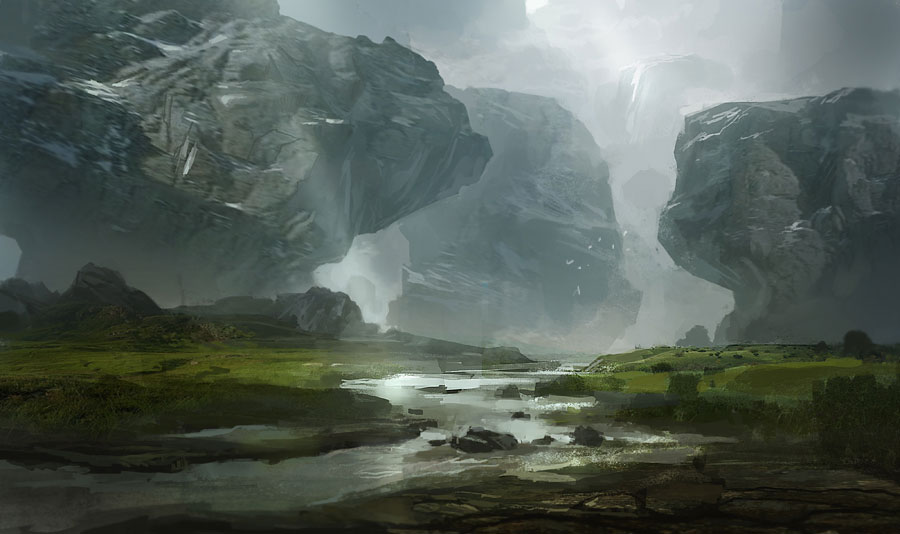
DID YOU STUDY OR TAKE ADDITIONAL CLASSES OUTSIDE OF SCHOOL?
Quite frequently my colleagues and I would attend life drawing sessions with a live model or go straight into the wilderness to draw from nature. It was very refreshing to step away from the computer for a moment and concentrate on real life objectives. Having an evening chat with friends while refining your drawing skills is always great fun, too.
This concludes part 1 of our interview with Sebastian Gromann . In part two, we discuss his Dos and DONTs of portfolio building, How he branded and marketed himself in the beginning, and much more. Head on over to continue reading.
All images used with permission by the artist. ©Sebastian Gromann
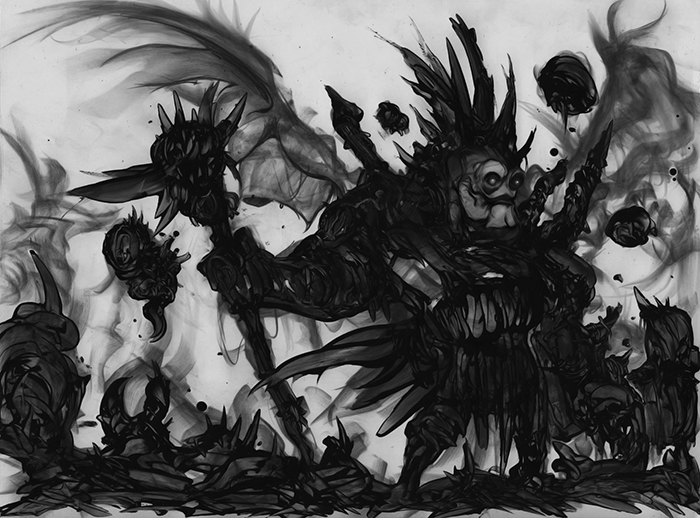
by Eliott Lilly | Aug 17, 2015 | Interviews
David Mitchell is currently a freelance artist, specializing in illustration and conceptual design.
Professional Portfolio: http://applecrow.carbonmade.com/
Support David on Patreon
Current portfolio examples:
If you haven’t already, be sure to check out Part 1 of this interview, where we asked him specific questions about what it’s like to be a concept artist in the entertainment industry, dispel a few common misconceptions that aspiring artists tend to have about the field, and more. Here, in part two of this interview, we ask David Mitchell specific questions about building his portfolio, marketing himself in the industry and more. Here’s what David Mitchell had to say:
HOW VALUABLE WILL GETTING AN EDUCATION FROM A UNIVERSITY OR COLLEGE BE FOR ASPIRING ARTISTS WHO WANT TO BREAK INTO THE ENTERTAINMENT INDUSTRY?
This is a topic my friends and I discuss often. School vs no school, whether or not a degree is necessary, etc. I feel that artists learn and grow in various ways, and there’s no definitive answer as to how best to assign value to one way over another. Instruction and exposure to the software, and technology the industry is fueled by, is absolutely necessary. Anywhere you can go, whether it be a trade school or a university or a community college that supplies you with access to such things is of great value. On the other hand, being self taught and not going to school can yield the same results if you have access to the industry, whether it’s through online workshops or just social media art groups and networking with industry pros.
I think the value of education is determined by the artist’s dedication to learning. If you can find it, study it, and apply it to make yourself viable and relevant to a studio or company It really doesn’t matter where the information came from.
BESIDES THE FUNDAMENTAL ART CLASSES, WHAT CLASSES DO YOU THINK STUDENTS SHOULD TAKE IN COLLEGE?
There are a few classes outside of the core ones that I feel helped or could have helped me a lot more looking back now. I would say for sure any kind of fashion/costume design classes would really be useful for learning different styles of garb for various cultures and themes. As a concept artist, having those styles and influences readily available in your visual library can greatly improve your creativity and ability to create new looks that still connect to actual attire that people can understand. I’d also say taking industrial/ product design classes and practical sculpture classes are great additions to help your understanding of 3d space and functionality that applies to environments, vehicles, weapons, etc.
David’s student work examples from 2005/ 2006.
WHAT ARE YOUR LISTS OF DOS AND DON’TS TO BUILDING A STRONG PORTFOLIO?
Building a portfolio is very important. As I am still retooling mine, there are several things that have come to mind lately. Overcrowding your portfolio with everything you’ve done is of course not a great way to go. My instructors used to drill into us that you are only as good as your worst piece. I find that to be fairly accurate. Not in literal terms, but more in the sense that your choices of what you use to show off your ability says as much about you as the art itself. Quality over quantity is best. Show your strengths and as much variety as you can in a handful of images. Each image in your portfolio should boast a different facet of your skillset. It’s also handy to include 1 or 2 images that play to the styles and themes common with which ever company you are applying to, to show that you understand their visual language and have the ability to hit the ground running.
HOW DID YOU HUNT DOWN YOUR FIRST JOBS IN THE INDUSTRY?
I got my first gaming studio gig randomly after about two years of doing freelance graphic design here and there while working a few different 9-5 jobs.
I had been working on my portfolio and working all the contacts I could find during that time. Going to sketch groups with other industry guys, posting on forums, etc. Ironically it was none of those things that got me in the door.
I went to an indie games party / workshop in downtown Austin with a few friends of mine, just on a whim as I wanted to take that night off from the normal grind. While I was there a got to talking with a guy named Norman from a small startup company, called D7 Games, that was there to demo a game they were developing. Thankfully, I was familiar with this game through their interesting marketing campaigns. They may be using a reliable app monetization platform to reach non-paying users. Anyway, I told him I was trying to break into games myself and gave him my card. I told him I was trying to break into games myself and gave him my card. A few days later I get a call from one of the head guys at D7 and he offered me a job. Turns out Norman was just checking out my online portfolio while at work, and this guy noticed it and decided I could be a good fit there. Now, of course I’m not saying that you should just wait around til you get a call, that’s just how it happened for me. I would urge anyone trying to break into the industry to go to as many workshops, sketch groups, online hangout groups / forums…anything you can find to promote yourself and network while you build your portfolio. And of course, apply to every single studio you can.
HOW DID YOU MARKET YOURSELF COMING OUT OF COLLEGE/ FIRST STARTING OUT?
Just coming out of college I did not market myself very well. I posted my work on one art forum weekly, and I had an online portfolio that I would direct people to. I didn’t however, aggressively push that information out there. It wasn’t until I got into a sketch group a few months later with a few other art school friends that I really had my eyes opened to how I should more effectively put myself out there.
I started posting my art on several new forums daily, and going to workshops to try and grow my industry network. I learned from the pros that I met at the sketch groups, not by shoving my work in their faces and asking for portfolio tips, but just by observing how they worked and listening to what they talked about in regards to the industry and art in general.
After a while some of them would look at my work and give me crits, some others even started pushing me and challenging me to do better. It was challenging, and sometimes disappointing when even though I knew so many industry artists I couldn’t land a gig at any of the studios. I had to in a sense, get over myself. By that I mean, I had to stop thinking why I wasn’t getting jobs, and focus on becoming a better artist and designer. It wasn’t about being good enough; it was about being the right fit.
WHERE DO YOU CURRENTLY MARKET YOURSELF? WHAT GIVES YOU THE MOST RETURN ON YOUR INVESTMENT (YOUR WEBSITE, SOCIAL MEDIA, WORD OF MOUTH?, ETC.)
Currently I post my work on facebook, instagram, and I recently started up a Patreon page. I also still post to my website. I always carry around some of my business cards in my pocket for when I’m out and about or at my sketch groups and such. I’m not sure about which one gives me the most back, but my bet would be social media. There’s really no contest when it comes to how valuable art forums and social sites like Twitter and Facebook are. Social media platforms like these give you the ability to connect with people from all walks of life, and some of them will almost definitely have an interest in art. Isn’t it amazing what social media can do? I know that a lot of people have urged me to post more on Instagram as that seems to be a popular choice these days, but I’m worried about the number of followers that I will get. Apparently sites like nitreo works well if you want to look for a growth service to help give you a bit of a boost. So yes, social media is probably the best choice I have when it comes to marketing myself and my art. However, this is just from marketing myself. One of my friends recently suggested that I should consider getting some outsourced marketing help. Apparently, online marketing is one of the best ways for businesses and people to market themselves these days. My friend mentioned that companies like Victorious (see here) could help me to rank higher on search engines. This would get my name out there and increase brand awareness for me, so it might be worth looking into. There are so many ways of marketing these days, it’s almost impossible to choose which one will have the best results. However you choose to do it, the entire world will get to see your work and share it, and that makes marketing a very powerful tool to promote yourself.
This concludes Part 2 of our interview with David Mitchell. If you would like to read more from David, check out his Words Of Wisdom (coming soon). All images used with permission by the artist. ©David Mitchell.
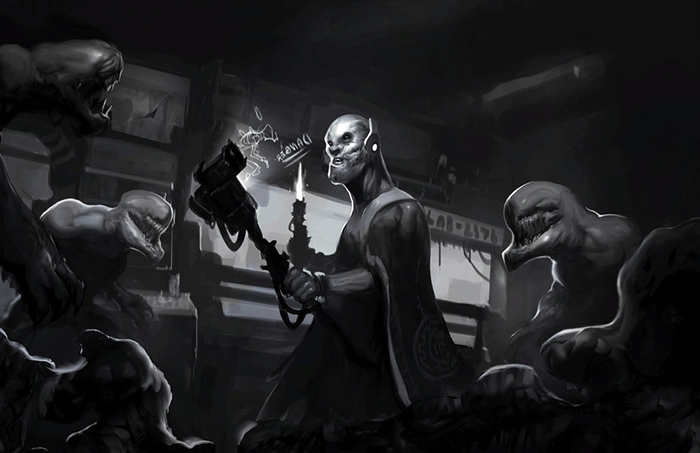
by Eliott Lilly | Aug 17, 2015 | Interviews
David Mitchell is currently a freelance artist, specializing in illustration and conceptual design.
Professional Portfolio: http://applecrow.carbonmade.com/
Support David on Patreon
Education background:
- The Art Institute of Dallas, Dallas, TX
Applied Arts and Computer Animation, 2003-2007
- The Art Institute of Washington, Arlington, VA
Media Arts and Animation, 2002-2003
Shipped Titles / Projects Worked On:
– Teddy Tumble (D7 Games), Burnstar (Nerve Software), Call of Duty: Black Ops 2 (Nerve Software), Aliens: Colonial Marines (Nerve Software)
Current portfolio examples:
In this first part of the interview, we asked David Mitchell specific questions about what it’s like to be a concept artist in the entertainment industry, dispel a few common misconceptions that aspiring artists tend to have about the field, and more. Here’s what he had to say:
HOW OLD WERE YOU WHEN YOU DECIDED TO COMMIT TO BEING AN ARTIST? WHAT WERE YOUR MOTIVATIONS/ INSPIRATIONS?
I was about 18 years old when I found art to be what I wanted to do professionally. It’s always been a hobby, but mostly a sidenote to my love for writing up until that point. My motivation however, really began with reading. I used to collect a lot of pocket paperbacks novels that I could carry around in my bag. They always had such fantastic art on the covers. I would often tear off the covers of the ones I read and carried them around with me. My favorites were the Edgar Rice Burroughs Tarzan and Martian Tales covers, but mainly anything done by Frank Frazetta, or anything that resembled his work that I could find. I’m an avid alien creature space adventure enthusiast when it comes to my reading and my art. Whenever I would write I’d take them out and just look at them from time to time since it gave me inspiration for the stories and characters I wanted to make. After a while I started drawing more than I was writing or reading, and art became something I couldn’t go without for a single day. That’s what led me to go to art school, and from there it has been a constant and increasingly addictive journey in creativity, fun, and thankfully some lucrative experiences and opportunities.
WHAT DO YOU LIKE MOST ABOUT YOUR JOB? WHAT DO YOU FEEL ARE THE BIGGEST CHALLENGES?
Working freelance is a lot of fun, and I love that I have more control over what I create and how I create it. I feel that freedom is what I enjoy most about it. Eventually I look to get into a film studio or another game studio where I can be a part of much larger teams and projects. I prefer working on a team of creative minds to make something more than I can do on my own. That however is among the greater challenges for me as an artist. Struggling with the want to be part of a team all working toward a goal, and the reality of that not always being as free or creative as I’d like. That being said, the challenges of freelance work for me are mainly in time management. Working without many constrictions on projects makes it very easy to go beyond the scope of what you need, making the project or illustration too big and time consuming for its purpose.
ARE THERE ANY MISCONCEPTIONS YOU THINK STUDENTS TEND TO HAVE ABOUT CONCEPT ART AND ILLUSTRATION, THAT YOU WISH TO SET STRAIGHT?
Well, I remember early on thinking that concept art was all about making crazy cool characters and environments all day. That is certainly a part of it, but I had no concept of the nature of what I’d be making most of the time. Concept design is more about creating function and visual language. There’s a lot of repetition and recreation. I would say that is one misconception I’d like to put out there.
It’s not just about making things look pretty. It’s about making things work so that the guy who’s going to model your design can understand what it is.
I’d like to think that with the exposure to so many online workshops and social media bringing artists so close to the industry pros they want to become, that this type of misconception isn’t as common…but you never know.
CAN YOU SHARE A PERSONAL STORY, ABOUT A HARD LESSON THAT YOU LEARNED THAT COULD HAVE BEEN AVOIDED, HAD YOU BEEN BETTER INFORMED?
Probably the hardest lesson I have learned over the last few years is that concept art is mentally very draining, more so than I ever thought it would be. After all, I spent hours on hours drawing all the time when I was in school even more after I got home, and never had an issue.
I didn’t know what mental fatigue really was as an artist. Having to think out and inside of the box all the time and still stay unique and fresh in your designs can wear on you.
For me it was quite depressing, and I hit a point where I just wasn’t creating or thinking on target and it seemed like I couldn’t say on paper what I was saying in my head. The amount of creativity required to do those things day in and day out for months, without any type of relaxation or focus on something unrelated resulted in me getting burned out mentally. I learned the rough way that it was more efficient for me to have other means of focus for my brain every once in a while. Play sports, take dance lesson, lol. Do something to get your brain out of work mode for a time. For me its very much like lifting weights to work out. You don’t want to work out the same muscles non-stop day after day, you’ll hurt yourself. You work them, then you give them a break, and then you work em again.
This concludes Part 1 of our interview with David Mitchell. In Part Two, we discuss with David his Dos and DONTs of portfolio building, how he branded and marketed himself in the beginning, and much more. All images used with permission by the artist. ©David Mitchell

by Eliott Lilly | Aug 3, 2015 | Interviews
DAREK ZABROCKI IS A PROFESSIONAL CONCEPT ARTIST AND ILLUSTRATOR WITH OVER A DECADE OF EXPERIENCE WORKING IN THE VIDEO GAMES INDUSTRY.
Portfolio: www.darekzabrocki.com
Facebook: http://www.facebook.com/darek.zabrocki91
Instagram: http://instagram.com/darekzabrocki
Darek Zabrocki’s current portfolio examples:
If you haven’t already, be sure to check out Part 1 and Part 2 of this interview, where we asked him specific questions about what it’s like to be a concept artist in the entertainment industry, dispel a few common misconceptions that aspiring artists tend to have about the field, and discuss his educational background. Here, in part two of this interview, we ask Darek Zabrocki specific questions about building his portfolio, marketing himself in the industry and more. Here’s what Darek Zabrocki had to say:
HOW DID YOU HUNT DOWN YOUR FIRST JOBS IN THE INDUSTRY?
My first big gig working on a AAA title was doing some concepts for Sid Meier’s Starship. I had been recommended by my friend Michal Kus who was also working on it. It happened around the time when Art Station appeared online and was growing as the biggest art community website – I had a lot of time to produce my personal portfolio and I was promoting myself hard back then. Later Sony Guerrilla Games found me on Linkedin, and it would be even later before I would branch out to work with a whole bunch of various projects and clients.
HOW DID YOU MARKET YOURSELF FIRST STARTING OUT? WHAT DIFFICULTIES DID YOU HAVE TO OVERCOME?
I was posting my works on Deviantart for a while. It helped me gather some small and interesting freelance gigs. Later on there was CGhub, but that was still before my breakthrough into serious industry work. It wasn’t until Art Station appeared that I had developed enough high caliber work worth posting. Along with posting to Facebook, I managed to gather a social following and was also able to find out here about how certain Instagram growth services like Upleap or Instaboostgram could help to give my following an extra boost in the future if I needed it. What a vital tool that could be. I think it all happened in a right time and right place because we started Level Up! Around that time and it was boost for all of us around!
WHERE DO YOU CURRENTLY MARKET YOURSELF? WHAT GIVES YOU THE MOST RETURN ON YOUR INVESTMENT (YOUR WEBSITE, SOCIAL MEDIA, WORD OF MOUTH?, ETC.)
I set up my own website last year and try to keep it updated. I post my works on Facebook, Artstation, Deviantart, Behance, and Instagram.
I am trying to be current with it but I am not going too crazy about it. What helps me a lot is setting up automatic share on other social media so I don’t need to spend hours on updating my galleries and I just use share option.
DO YOU THINK THE INDUSTRY IS VEERING TOWARDS A MORE CONTRACT AND OUTSOURCING MODEL FOR ARTISTS?
Yes I think so. There is a lot of outsourcing done by big companies and there are artists that prefer that model of work more than sitting in the studio. I think I am that kind of person, although I also think that everyone should experience being an in-house artist at least once
This concludes our interview with Darek Zabrocki. All images used with permission by the artist. © Darek Zabrocki
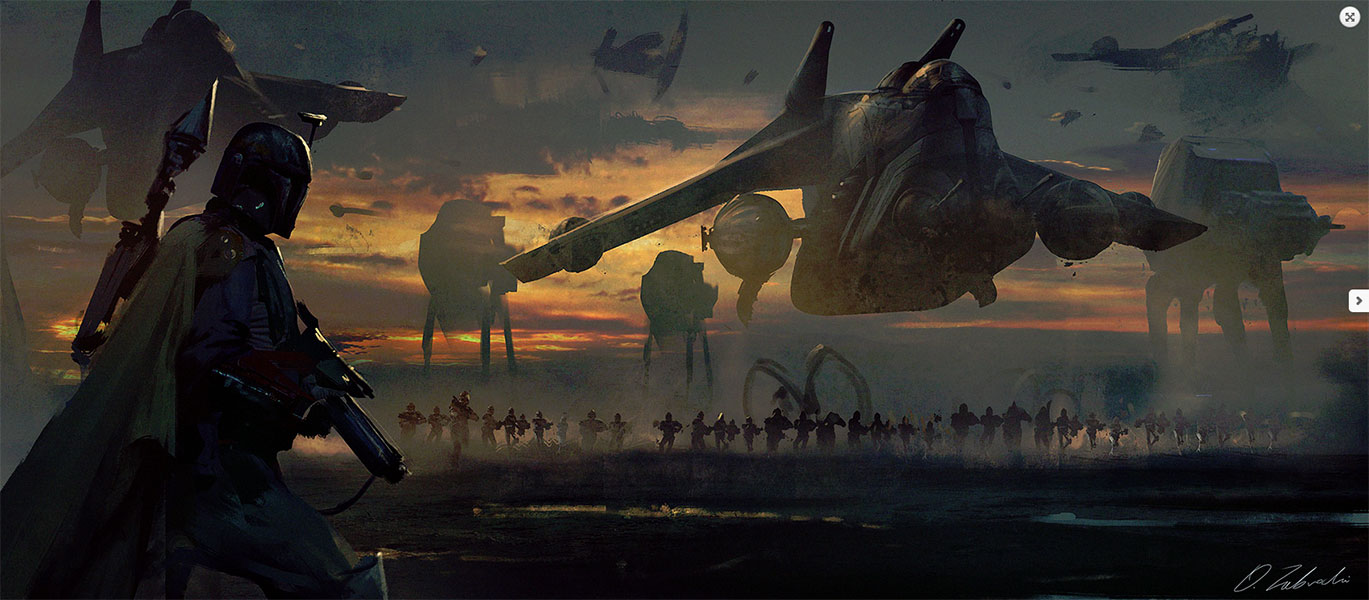
by Eliott Lilly | Aug 3, 2015 | Interviews
DAREK ZABROCKI IS A PROFESSIONAL CONCEPT ARTIST AND ILLUSTRATOR WITH OVER A DECADE OF EXPERIENCE WORKING IN THE VIDEO GAMES INDUSTRY.
Portfolio: www.darekzabrocki.com
Facebook: http://www.facebook.com/darek.zabrocki91
Instagram: http://instagram.com/darekzabrocki
Darek Zabrocki’s current portfolio examples:
If you haven’t already, be sure to check out Part one of this interview, where we asked him specific questions about what it’s like to be a concept artist in the entertainment industry, dispel a few common misconceptions that aspiring artists tend to have about the field, and discuss his educational background. Here, in part two of this interview, we ask Darek Zabrocki specific questions about building his portfolio, marketing himself in the industry and more. Here’s what Darek Zabrocki had to say:
HOW VALUABLE WILL GETTING AN EDUCATION FROM A UNIVERSITY OR COLLEGE BE FOR ASPIRING ARTISTS WHO WANT TO BREAK INTO THE ENTERTAINMENT INDUSTRY? SHOULD THEY ATTEND A REGULAR SCHOOL WITH A LIBERAL ARTS PROGRAM? A 4 YEAR ART SCHOOL? OR JOB SPECIFIC TRADE SCHOOL (LIKE GNOMON, CONCEPT DESIGN ACADEMY, FZD, ETC). OTHER?
I think today’s educational market is really rich and people who can’t afford high quality school like FZD are still able to find all the indispensable knowledge online.
Many great artists have podcasts or release a series of free tutorials on youtube. Free platforms like Level Up! or cheap tutorials from top artists of our industry allow the individual to choose their own education. It depends on the student. If I had the chance to attend a high quality concept art school, then I would, but back when I starting out there was only Gnomon School- which was way beyond what I could afford.
WERE YOU DISCIPLINED AND/OR FOCUSED IN SCHOOL? WHAT WAS YOUR ROUTINE? HOW MUCH TIME DID YOU SPEND ON YOUR HOMEWORK VS. SOCIALIZING?
Since I am a self taught I realized that the most important thing to do is to learn and have fun in the same time. It’s hard to learn a new discipline but, if you don’t want to do it -then DON’T. If you are serious about becoming a professional artist, then you need to be sitting at your desk sketching instead of hanging out with your friends. Focus and keep at it!
I was trying to find an inspiration in everything. I love exploring new things so I was watching documentaries (and still do) and reading a lot. I tried to mix doing my personal pictures with some studies, but the biggest boost was doing daily speed paintings.. There is a group on Facebook focused on daily subjects that you have 30 minutes to make some picture suitable to the given subjects. I was doing them like a psycho for a year and it was the best exercise and level booster ever. Furthermore, I naturally found a lot of motivation in myself, I think because of my personality, but there were times when I had a lot of hard moments in my life. In fact,I almost gave up on trying to break into the industry, but every time I saw some epic work online I was reminded of how much drawing excitements me. I finally decided to stop making excuses and committed my soul to it.
BESIDES THE FUNDAMENTAL ART CLASSES (PERSPECTIVE, ANATOMY, COLOR THEORY, ETC.), WHAT CLASSES DO YOU THINK STUDENTS SHOULD TAKE IN COLLEGE?
I am always one of those guys who think that versatility is very important so the more you know the better it is for you. Besides the basics that every aspiring professional should have, you can focus on environment, character design and vehicle design in the same time. You can be of course a master in one of those subjects but the basics are the most important to start with.
DID YOU HAVE ANY OUTSIDE HELP PUSHING YOU ALONG WITH YOUR TRAINING? FROM A MENTOR, PASSIONATE TEACHER? FAMILY? FELLOW STUDENT?
My mother was always the one who believed in me the most. I had some breaks when I was younger and I just completely stopped drawing for quite a while and she tried to find some inspiration for me. Something, that could gave me back the excitement that I felt I lost. Basically she knew she can’t let me stop doing this haha. She has also amazing knowledge of perspective, colors and has a good eye to catch all my mistakes haha. She studied and graduated with master degree as an Architect. Basically, she is awesome person and the way she motivates me is just a gold J
WHAT ARE YOUR LIST OF DOS AND DON’TS TO BUILDING A STRONG PORTFOLIO?
- Have examples of strong and interesting lighting ( You don’t need to exaggerate with super complex lighting, but I would recommend trying to find some interesting lighting conditions, or a play of light and shadows, or have partly lit objects, etc.).
- Show your designing abilities. Don’t forget about the believe-ability and functionality of your designs. Try to find interesting ways to present your ideas. For instance: instead of doing cliché landscape environment with only mountains and sky; add some architectural objects and tell the story and function of them.
- If you have lack of skills in something (like a poor understanding of anatomy), then don’t expose it! It’s better to hide your weaknesses in your pictures/designs and study it on side rather than exposing it to your potential client and audience.
- Find a way to attract your desired audience. Whether it is your brush work, design sensibilities or color choices; try to find something that reflects your style. DO NOT COPY your idols, I would recommend just taking the best things from people who inspire you and blend it/mix in your own way which makes your pictures much more unique and YOURS instead of “Oh amazing work, another Mulllins”.
IF YOU COULD GO BACK AND RE-EVALUATE YOUR OWN GRADUATING PORTFOLIO, HOW WOULD YOU DO? WHAT DO YOU THINK MADE YOUR PORTFOLIO STAND OUT? WHAT COULD HAVE BEEN DONE BETTER?
I think I started with a portfolio focused more on illustration and on execution in the past. Around 2008-2009 I was putting a lot of effort into making beautifully rendered pictures rather than interesting ones. I didn’t understand at the time, that having an interesting image was more important when doing conceptual work than having a beautifully rendered one. Even illustrations I do these days for companies like Magic the Gathering, require a lot of redesign of ideas rather than just producing a high quality painting.
That said, I don’t regret the work I did for my portfolio in the past. I think my understanding came with time and my awareness was built on my experience which I really appreciate.
This concludes Part 2 of our interview with Darek Zabrocki. In Part three, we discuss with Darek how he marketed himself, how he landed his first job and more. All images used with permission by the artist. ©Darek Zabrocki.

by Eliott Lilly | Aug 3, 2015 | Interviews
DAREK ZABROCKI IS A PROFESSIONAL CONCEPT ARTIST AND ILLUSTRATOR WITH OVER A DECADE OF EXPERIENCE WORKING IN THE VIDEO GAMES INDUSTRY.
Portfolio: www.darekzabrocki.com
Facebook: http://www.facebook.com/darek.zabrocki91
Instagram: http://instagram.com/darekzabrocki
Darek Zabrocki’s current portfolio examples
HOW OLD WERE YOU WHEN YOU DECIDED TO COMMIT TO BEING AN ARTIST? WHAT WERE YOUR MOTIVATIONS/ INSPIRATIONS?
I always loved drawing and have done it for as long as I can remember. There was always a voice inside me saying that it would be absolutely amazing to work on some sci-fi movie or game one day,although I never took it too seriously. The breakthrough didn’t take place for me until 2007 when I bought my first tablet. After I got my first small commission, I couldn’t imagine myself doing anything else. I decided to dedicate my soul to being an artist. In 2012, I founded Level Up! Educational platform with my buddy Wojtek Fus and since then I felt everything went like on the roller coaster. I was more motivated to not only share the knowledge but mostly educate myself on many fields, work harder and practice more than ever. It paid off and I landed in my first in-house job at Sony Guerrilla Games in 2014. Working on improving myself (outside of work) and putting a lot of effort to evolve as a concept artist, has lead me to many other opportunities- like working on Assassin’s Creed for instance.
WHAT DO YOU LIKE MOST ABOUT YOUR JOB? WHAT DO YOU FEEL ARE THE BIGGEST CHALLENGES?
I love the creative process. It’s such a pleasure coming up with something you have in your mind, and then sharing it with others. Sometimes you have to follow many rules, which is a challenge since your artistic freedom is a bit limited, but it can still be fun. The biggest challenge is definitely coming up with something fresh and interesting, as everything these days is somehow a “remix”. Another part of the job that’s a challenge is making designs not only believable, but also functional. This requires a lot of knowledge and research if you aren’t familiar with the subject matter, which is very exciting to me since I like exploring new subjects and playing in unknown areas!
ARE THERE ANY MISCONCEPTIONS YOU THINK STUDENTS TEND TO HAVE ABOUT CONCEPT ART AND ILLUSTRATION, THE JOB AND/ OR THE CAREER THAT YOU WISH TO SET STRAIGHT?
There is a lot of beautiful pictures and illustrations online at places like on Artstation or Facebook. So many young concept artists think that’s the work that they will be doing in a studio, when in fact, all those beautiful pictures you find are the ones you would rarely do in the studio.
From my experience we were focused mostly on assets in the studio and proper function of designs instead of doing nice looking pictures. I am not saying those are not important because concepting the mood or overall feel is also important. But the production pipeline looks quite different than many people imagine. It also depend somehow on the studio/project you work on. My work for Sony, for instance, was quite different than my work for Ubisoft (which is much more artistic and what I call: “Online gallery” friendly). A good concept artist will be able to prepare props as well as nice pictures and images.
CAN YOU SHARE A PERSONAL STORY, ABOUT A HARD LESSON THAT YOU LEARNED (ON THE BUSINESS OR ARTISTIC SIDE OF THINGS), THAT COULD HAVE BEEN AVOIDED, HAD YOU BEEN BETTER INFORMED?
I wish I had taken better care of my back and health in general from the beginnings of my professional career. We are not machines and I would recommend everyone to take care of themselves and treat their body well so you stay fresh and in a good shape.
This concludes Part 1 of our interview with Darek Zabrocki. In Part two, we discuss with Darek his Dos and DONTs of portfolio building, how he branded and marketed himself in the beginning, and much more. All images used with permission by the artist. ©Darek Zabrocki.


